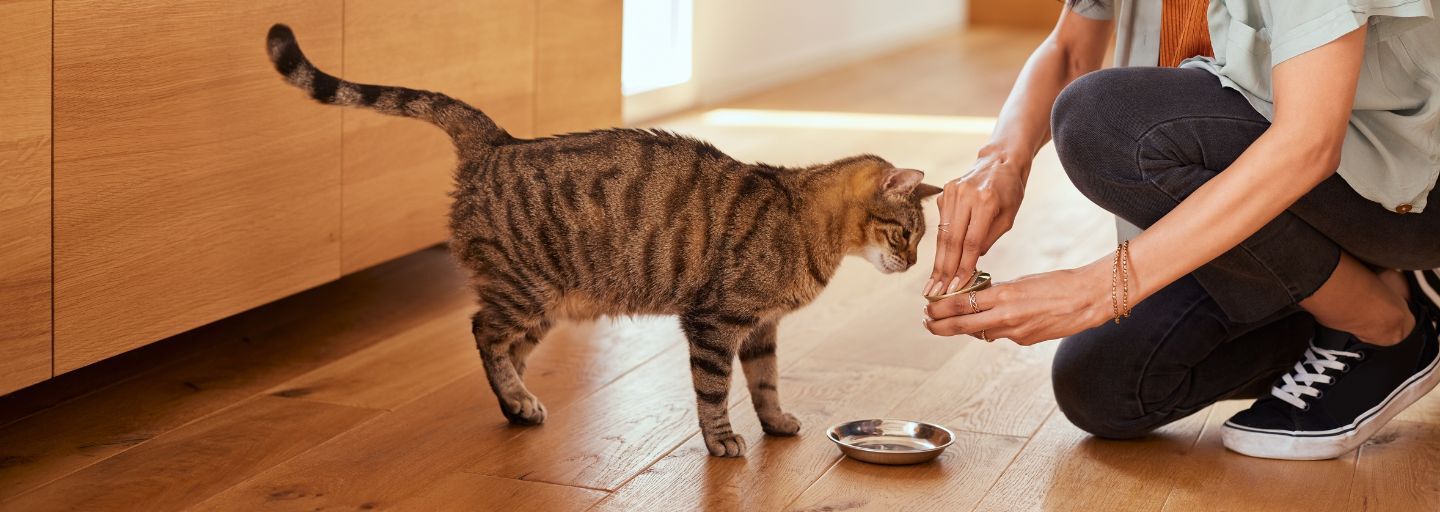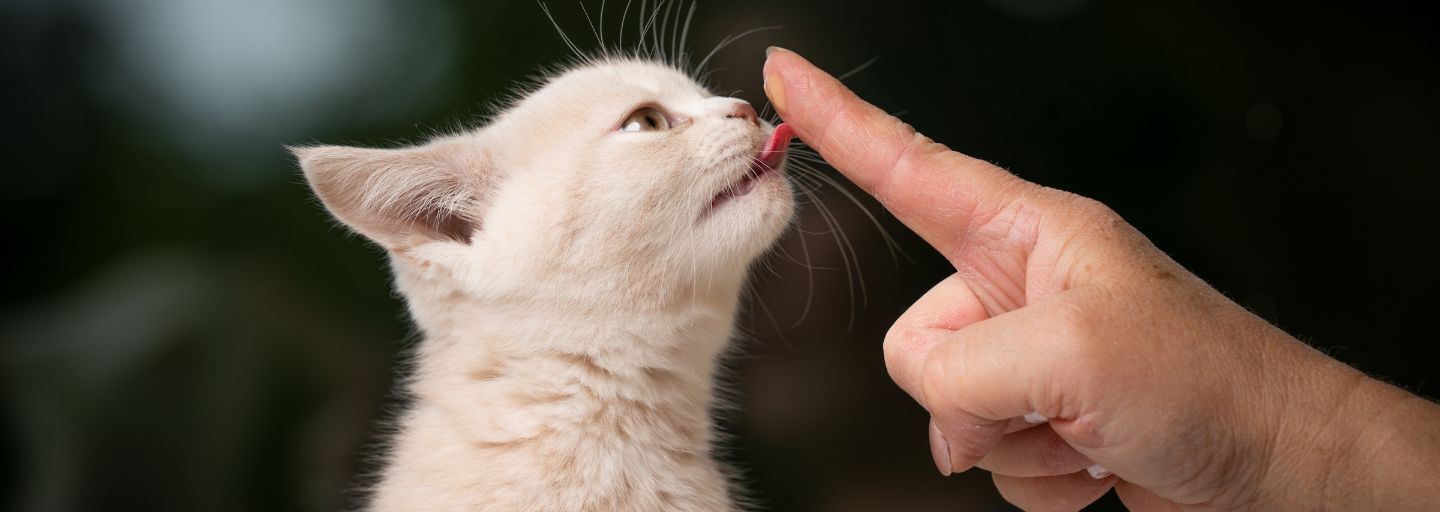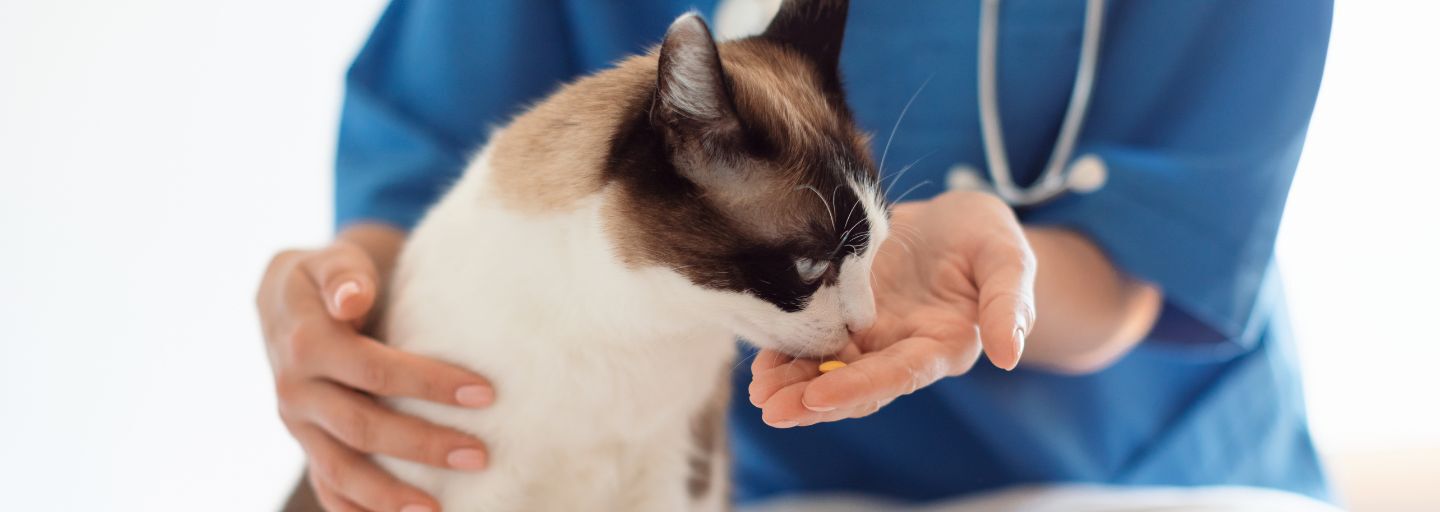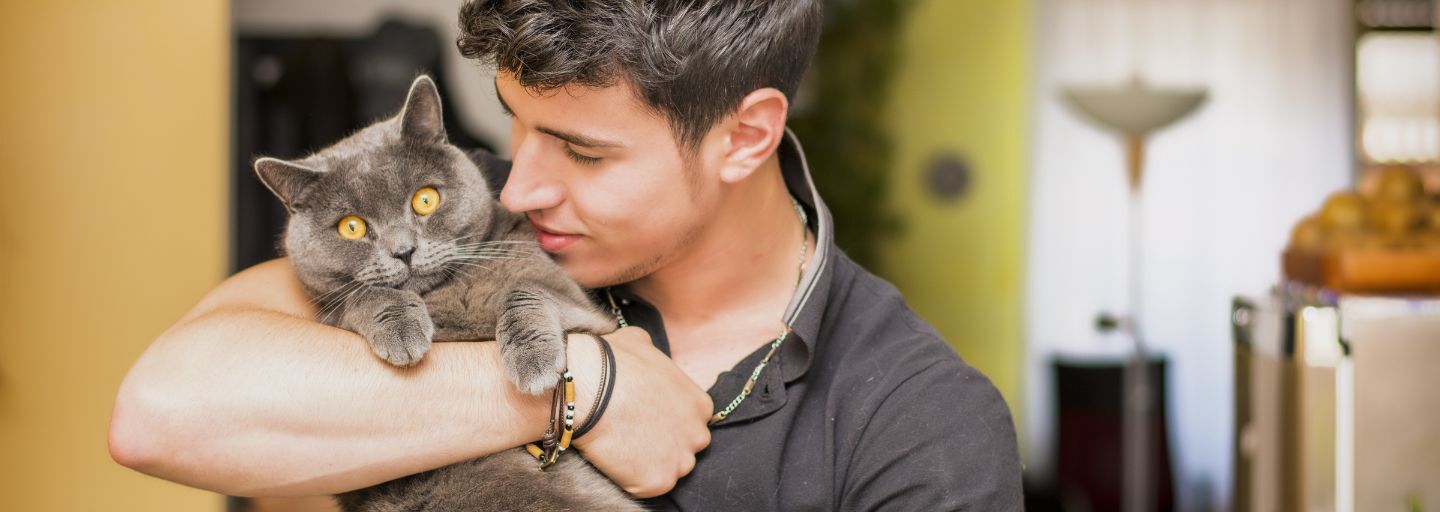As your cat passes through various life stages, their needs and lifestyle will change. Altering their feeding routine according to and considering other diets will ensure their needs are still being met.
How much to feed your cat
Every cat is an individual. Like people, some pets put on weight more easily than others and need less food to keep them slim and fit, while others need extra to keep them at their ideal body weight. Feeding guides are as accurate as possible, but sometimes you may need to feed a pet more or less food to achieve their optimum body condition.
Assess your cat's body condition by trying to feel its ribs. You should just be able to feel them under a firm covering of flesh. There should be a waist between the ribs and hips, and the tummy should be tucked up. Cats tend to get plump, saggy stomachs first and then start to put on weight over the ribs.
Feed your pet less or more depending on how your cat measures up to this ideal. Once your cat is at the ideal weight, further slight adjustments may be necessary.
What to feed your cat
There are a number of specific articles on this site with feeding advice for cats by life stage and lifestyle. However, this quick nutritional guide is designed to highlight particular needs and how a specially formulated diet can help. You'll also discover which Purina brands are best for your cat.
Kittens
Kittens can grow up to 20 times bigger in just 5-6 months! This rapid transition to adulthood means their bodies have to manufacture muscle, bone, hair, teeth, and a fully developed immune system in a short amount of time. Kittens also burn as much as three times more calories a day than an adult cat as they explore their new world.
A specially formulated kitten food will contain extra protein to support healthy tissue and organ development as well as higher levels of essential minerals such as calcium, phosphorus, magnesium, zinc, and iron to help build strong bones and teeth.
The smaller bites in most manufactured kitten foods will make it easier for kittens to chew.
Click on the links below to see PURINA brands especially formulated for kittens.
Supercoat Purina ONE Pro Plan Friskies
Adult cats
If adult cats had their way, you would be feeding them 13-16 small meals a day, each one providing about the same amount of calories as a mouse! But to feed your cat correctly, you need to achieve the right balance of water, protein, fats and oils, carbohydrates, vitamins, and minerals.
Commercially produced cat foods are designed to get this balance right and should provide everything your cat needs throughout its adult years.
Remember the difference between a 'complete' and a 'complementary' food. Complete foods require no supplements. Complementary foods, such as treats and snacks, do not provide effective nutritional balance on their own. If feeding a complementary food, always reduce your cat's main meal intake proportionately to avoid overfeeding.
Always read the feeding guides on the back of packs carefully, but remember, different cats may need slightly different amounts to maintain their ideal body condition.
Adult cat foods from PURINA
Supercoat Purina ONE Pro Plan Friskies Fancy Feast
Senior cats
Older cats tend to take life a little bit easier, resting more and running less. As their lifestyle slows down, so does their metabolism. They burn less energy and therefore require fewer calories from their food. However, senior cats require a tailored diet to maintain overall health and body condition.
A good senior diet provides concentrated, high-quality, low-fat protein and easy-to-digest carbohydrates for energy, lower levels of phosphorus to reduce the strain on the kidneys, calcium to support aging joints, and vitamins to help fight infections as the immune system declines.
As cats age, their senses of smell and taste can fade a little, along with their ability to chew effectively. Feeding them smaller bites or food with higher meat content can help promote a healthy appetite.
Senior foods from PURINA
Supercoat Purina ONE Pro Plan Friskies
Indoor cats
Many less active breeds are very happy living life as indoor cats. But this can mean less opportunity for exercise and makes it harder for cats to retain their natural shape than outdoor cats.
Specially formulated indoor diets are high in protein and lower in fat. They also include additional less digestible, fermentable fiber to help fight hairballs.
Indoor diets from PURINA
Friskies Pro Plan Supercoat Purina ONE
Pregnant cats
Not surprisingly, good, balanced nutrition is vital during pregnancy. After all, a mum-to-be can be eating for up to seven! Pregnancy can cause periods of under eating, overeating, or not eating at all. All pregnant or nursing cats, however, need an extra boost of protein and energy to help them through a period of physical stress.
A standard adult cat food simply won't provide all the extra nutrients required. Try a specially formulated diet designed for pregnancy. If these are difficult to find, it's generally recommended to switch back to a kitten formula food during pregnancy. The additional calories and higher levels of other key nutrients are just what a pregnant cat needs.
Pregnancy diets from Purina
Supercoat Purina ONE Pro Plan
Kitten foods from PURINA
Supercoat Purina ONE Pro Plan Friskies
Overweight cats
Adult cats have a natural tendency to put on a few unwanted pounds, particularly those living indoors or older than seven. However, overweight cats are prone to serious conditions including diabetes, heart and respiratory problems, bladder stones, and arthritis.
If your cat becomes overweight, the most important step is to avoid giving any treats. However, commercially prepared 'light' formulas can also help. These are lower in fat but still contain all the necessary vitamins and minerals.
Light diets not only help overweight cats return to their correct weight but can also help older, less active cats continue to maintain a healthy body condition.
Light diets from PURINA
Pro Plan







